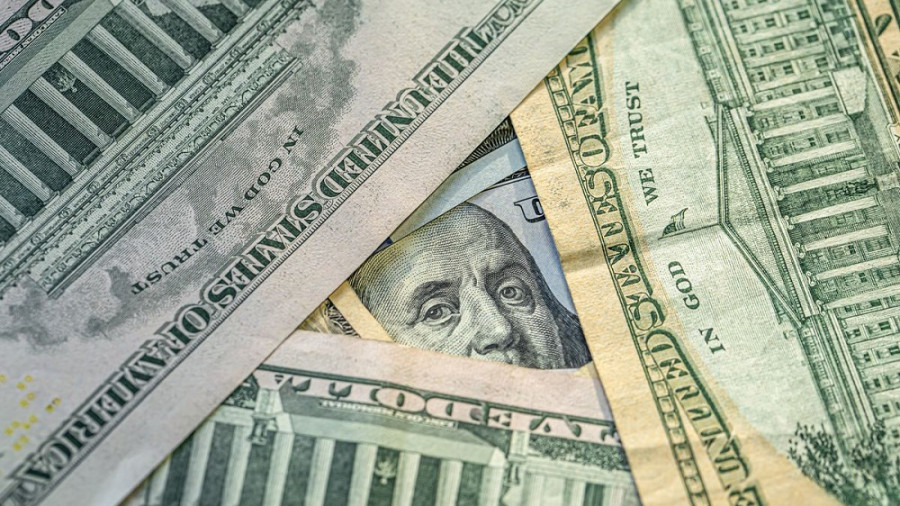
This week, the euro-dollar pair has firmly settled within the 8th figure, changing the price tier from 1.0850 – 1.0930 to the corridor 1.0800 – 1.0870. Such price dynamics are primarily due to the weakening of the European currency. The greenback, in turn, acts as a situational ally for EUR/USD sellers—the U.S. dollar index either gains momentum or declines, responding to the current news flow.
Analyzing the intraday trading of the pair, one can come to the obvious conclusion that both sellers and buyers of the pair are showing indecision. For instance, on Wednesday, the price hit a two-month low for the first time since June's decline to the base of the 8th figure. Given the rapid pace of decline, one could assume that the pair would overcome the 1.0800 support level and settle within the 7th figure—but no. During Wednesday's American session, the downward impulse sharply faded, after which the buyers took over: the pair ended yesterday at the 1.0864 mark. However, the EUR/USD bulls also did not benefit from the situation: today, bearish sentiments prevail for the pair (again).

What does this indicate? Primarily, traders are unsure about the prospects of both upward and downward scenarios. For a stable development of a up/down trend, a strong informational reason is needed, while at the moment, market participants impulsively respond to the current news flow, which mostly consists of secondary fundamental factors.
For example, Wednesday's downward impulse was due to the disappointing PMI indices. Business activity in the eurozone contracted much more than expected, reflecting the increasing problems of the European economy. And while the contraction of Germany's manufacturing sector (and the Eurozone) slowed down, the service sector unexpectedly entered a contraction phase. All (without exception) August PMI indices of Germany, France, and the eurozone were below the key 50-point mark, indicating a worsening situation in the respective sectors of the economy.
Such a result weakened traders' hawkish expectations regarding the ECB's further actions. There's talk in the market that after the September meeting, the European Central Bank will pause, keeping all monetary policy parameters unchanged. In my opinion, European inflation will play a decisive role here, the value of which we will learn next week. However, in the moment, the disappointing PMI indices indeed played their part, allowing EUR/USD sellers to update the two-month price low.
However, during the American session on Wednesday, the dollar also came under significant pressure, enabling buyers to reclaim lost positions. The greenback reacted negatively to the publication of the U.S. manufacturing PMI for August. The indicator was in the "red zone," dropping to 47 points (with a forecasted increase to 48 points). The report's structure indicates that the employment index decreased to 44.4 (from a previous value of 48.1), and the inflation component—the price index—fell to 41.8 (from a previous 42.6). It's also worth noting that the manufacturing PMI has been below the key 50-point mark since May of this year.
The U.S. services PMI also showed negative dynamics. Although this indicator remains "above the waterline," it has been declining for the third consecutive month, settling at the 51-point mark in August.
Such results undermined the positions of dollar bulls. At the same time, traders ignored rather strong data in the real estate market sector (the volume of new U.S. home sales increased by 4.4% in July, with a forecasted growth of 1%).
Against the backdrop of disappointing PMI data in the U.S., the yield on 10-year Treasury decreased by 3%, exerting additional pressure on the greenback. Moreover, risk appetite increased in the markets: key Wall Street indices showed positive dynamics on Wednesday, thanks to a significant rise in tech company shares. In particular, the Nikkei index rose by 0.48% to 32,010.26 points, the highest closing level since August 15. The broader index—Topix—went up by 0.5% (to 2,277.05 points).
Thus, on the one hand, the pair maintains a bearish tone: EUR/USD sellers managed to change the price range and secure themselves within the 8th figure. On the other hand, the current downward impulses are short-lived, replaced by significant upward pullbacks. It's clear that both sellers and buyers are awaiting Fed Chairman Jerome Powell's speech, scheduled for Friday as part of the economic symposium in Jackson Hole. The Federal Reserve's head can significantly "redraw" the fundamental picture for dollar pairs, either strengthening the greenback or weakening it with dovish rhetoric. Given such uncertainty, it's prudent for the pair to maintain a wait-and-see position.